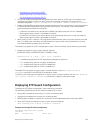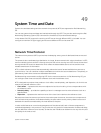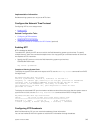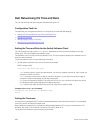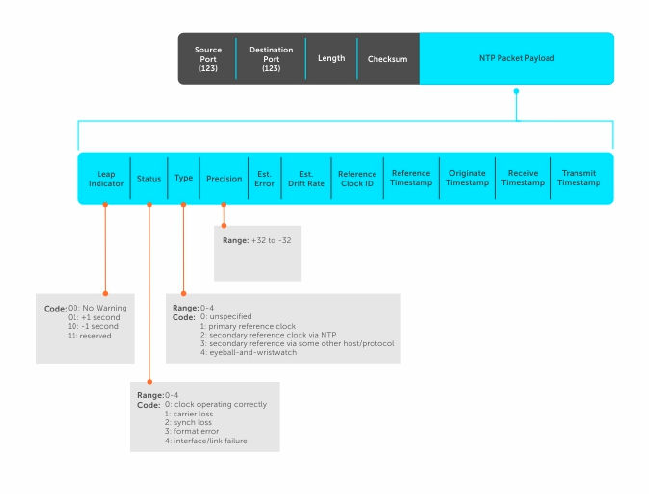
In what may be the most common client/server model, a client sends an NTP message to one or more
servers and processes the replies as received. The server interchanges addresses and ports, overwrites
certain fields in the message, recalculates the checksum and returns the message immediately.
Information included in the NTP message allows the client to determine the server time regarding local
time and adjust the local clock accordingly. In addition, the message includes information to calculate
the expected timekeeping accuracy and reliability, as well as select the best from possibly several servers.
Following conventions established by the telephone industry [BEL86], the accuracy of each server is
defined by a number called the stratum, with the topmost level (primary servers) assigned as one and
each level downwards (secondary servers) in the hierarchy assigned as one greater than the preceding
level.
Dell Networking OS synchronizes with a time-serving host to get the correct time. You can set Dell
Networking OS to poll specific NTP time-serving hosts for the current time. From those time-serving
hosts, the system chooses one NTP host with which to synchronize and serve as a client to the NTP host.
As soon as a host-client relationship is established, the networking device propagates the time
information throughout its local network.
Protocol Overview
The NTP messages to one or more servers and processes the replies as received. The server interchanges
addresses and ports, fills in or overwrites certain fields in the message, recalculates the checksum, and
returns it immediately.
Information included in the NTP message allows each client/server peer to determine the timekeeping
characteristics of its other peers, including the expected accuracies of their clocks. Using this
information, each peer is able to select the best time from possibly several other clocks, update the local
clock, and estimate its accuracy.
Figure 116. NTP Fields
914
System Time and Date








